GRAPHING STEP FUNCTIONS
A step function or staircase function is a piecewise function containing all constant "pieces".
The constant pieces are observed across the adjacent intervals of the function, as they change value from one interval to the next.
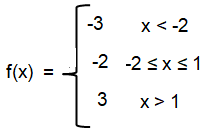
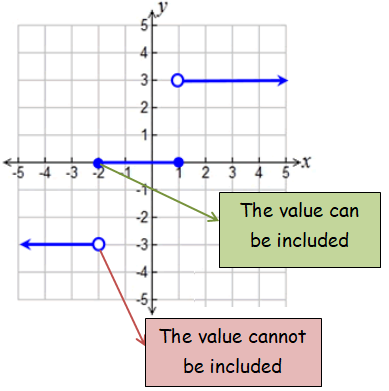
A step function is discontinuous cannot draw a step function without removing your pencil from your paper
Note :
It may be or may not be a function. To check whether it is a function, we have to use vertical line test.
Graph the following step functions :
Problem 1 :
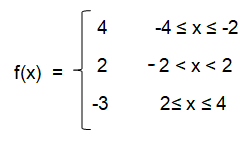
Solution :
f(x) = y
So, the line that we draw should be horizontal line. It will pass through the point 4, 2 and -3 respectively.
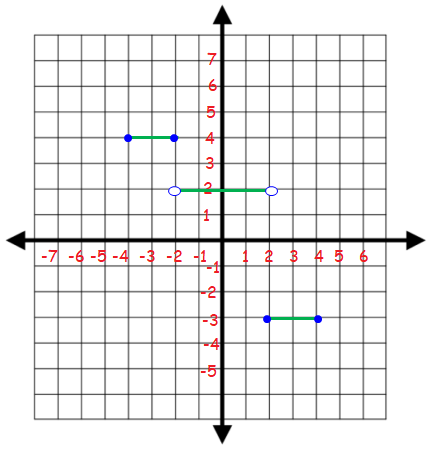
For y = 4, the domain is [-4, -2]. At both ends, we should use the filed circle.
For y = 2, the domain is (-2, 2). At both ends, we should use the empty circle.
For y = -3, the domain is [4, 4]. At both ends, we should use closed circles.
Problem 2 :

Solution :
f(x) = y
So, the line that we draw should be horizontal line. It will pass through the point 3, 1 and -1 respectively.
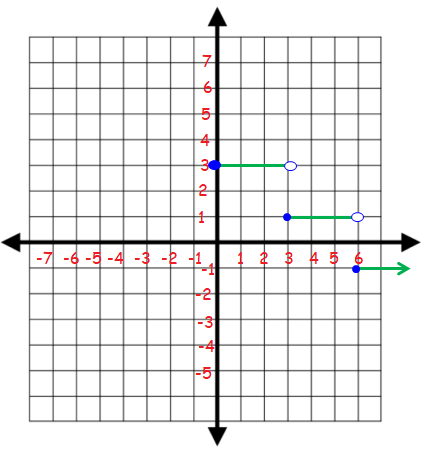
For y = 3, the domain is [0, 3). At the left end use filled circle and at right end use unfilled circle.
For y = 1, the domain is [3, 6). At the left end use filled circle and at right end use unfilled circle.
For y = 1, the domain is [6, 9). At the left end use filled circle and at right end use unfilled circle.
Problem 3 :
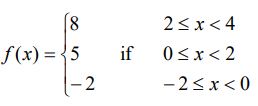
Solution :
f(x) = y
So, the line that we draw should be horizontal line. It will pass through the point 8, 5 and -2 respectively.
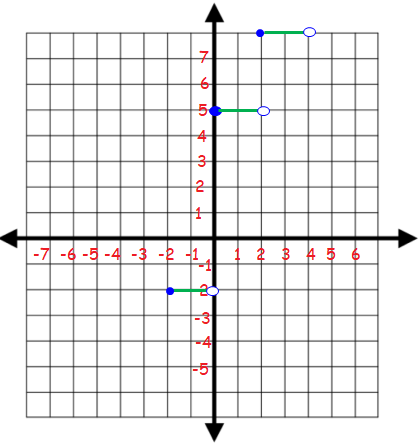
For y = 8, the domain is [2, 4). At the left end use filled circle and at right end use unfilled circle.
For y = 5, the domain is [0, 2). At the left end use filled circle and at right end use unfilled circle.
For y = -2, the domain is [-2, 0). At the left end use filled circle and at right end use unfilled circle.
Problem 4 :
The charge to rent a jet ski is $2.00 for the first hour and $1.00 for each additional hour or fraction there of. The fee is a function of the time the jet ski is used.
a) Sketch the graph of a step function that models this cost.
b) Write an equation for the linear function that approximates the cost. Sketch the graph of this linear function.
Solution :
a) The initial payment is $2.
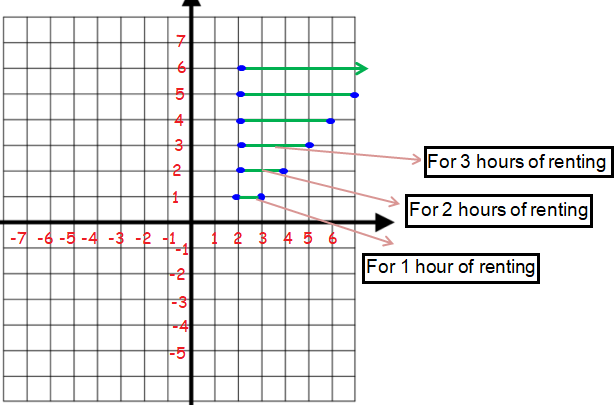
b) Initial cost = $2.
Let x be the number of hours renting.
Total cost = y
y = 2 + 1x
y = x + 2
Problem 5 :
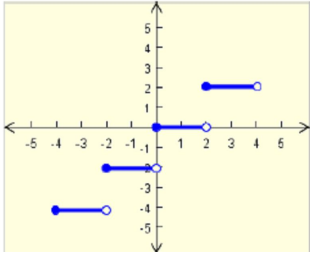
Solution :
Observing the graph from left to right, the first least value is -4.
From bottom to top,
|
Step functions f(x) = -4 f(x) = -2 f(x) = 0 f(x) = 2 |
Domain -4 ≤ x < 2 -2 ≤ x < 0 0 ≤ x < 2 2 ≤ x < 4 |
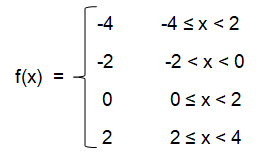
Problem 6 :
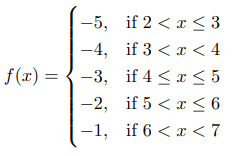
(a) Domain of f
(b) Range of f
(c) f(2)
(d) f(3)
(e) f(7)
(f) f(3.18)
(g) f(√ 20.14)
Solution :
(a) Domain of f = (2, 7)
(b) Range of f = {-5, -4, -3, -2, -1}
(c) f(2) does not exists
(d) f(3) = -5
(e) f(7) does not exists.
(f) f(3.18)
3.18 lies between 3 to 4. So, the value of f(3.18) is -4.
(g) f(√20.14)
√20.14 = 4.48 and lies between 4 to 5. So, the value of f(√20.14) is -3.
Recent Articles
-
Finding Range of Values Inequality Problems
May 21, 24 08:51 PM
Finding Range of Values Inequality Problems -
Solving Two Step Inequality Word Problems
May 21, 24 08:51 AM
Solving Two Step Inequality Word Problems -
Exponential Function Context and Data Modeling
May 20, 24 10:45 PM
Exponential Function Context and Data Modeling